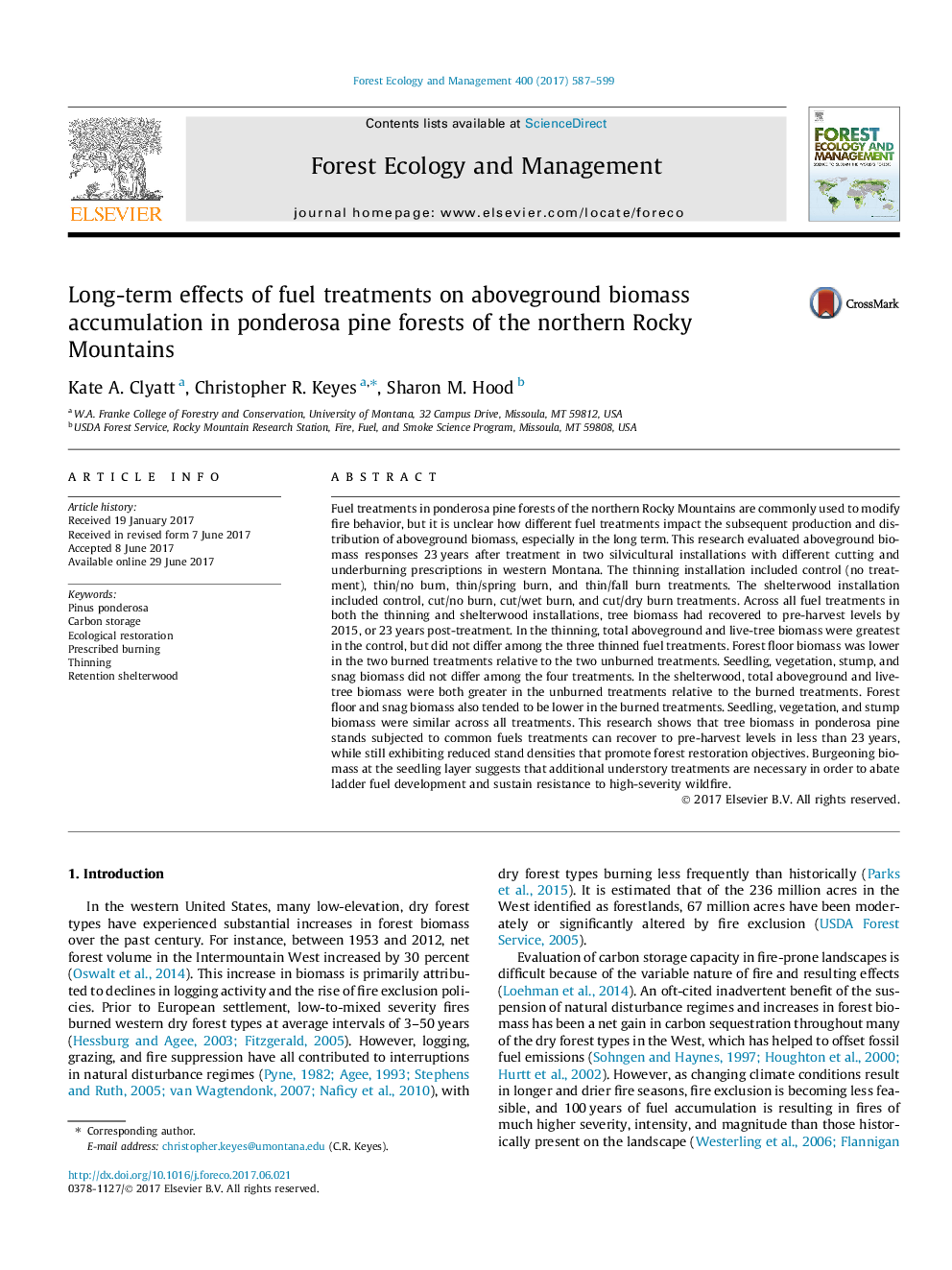| کد مقاله | کد نشریه | سال انتشار | مقاله انگلیسی | نسخه تمام متن |
|---|---|---|---|---|
| 6459304 | 1421358 | 2017 | 13 صفحه PDF | دانلود رایگان |
- Stands can recover harvested biomass from fuel treatments in as little as 13Â years.
- Burning after thinning can reduce forest floor biomass, even decades post-treatment.
- Burgeoning seedling biomass indicates need for repeated treatments.
Fuel treatments in ponderosa pine forests of the northern Rocky Mountains are commonly used to modify fire behavior, but it is unclear how different fuel treatments impact the subsequent production and distribution of aboveground biomass, especially in the long term. This research evaluated aboveground biomass responses 23Â years after treatment in two silvicultural installations with different cutting and underburning prescriptions in western Montana. The thinning installation included control (no treatment), thin/no burn, thin/spring burn, and thin/fall burn treatments. The shelterwood installation included control, cut/no burn, cut/wet burn, and cut/dry burn treatments. Across all fuel treatments in both the thinning and shelterwood installations, tree biomass had recovered to pre-harvest levels by 2015, or 23Â years post-treatment. In the thinning, total aboveground and live-tree biomass were greatest in the control, but did not differ among the three thinned fuel treatments. Forest floor biomass was lower in the two burned treatments relative to the two unburned treatments. Seedling, vegetation, stump, and snag biomass did not differ among the four treatments. In the shelterwood, total aboveground and live-tree biomass were both greater in the unburned treatments relative to the burned treatments. Forest floor and snag biomass also tended to be lower in the burned treatments. Seedling, vegetation, and stump biomass were similar across all treatments. This research shows that tree biomass in ponderosa pine stands subjected to common fuels treatments can recover to pre-harvest levels in less than 23Â years, while still exhibiting reduced stand densities that promote forest restoration objectives. Burgeoning biomass at the seedling layer suggests that additional understory treatments are necessary in order to abate ladder fuel development and sustain resistance to high-severity wildfire.
Journal: Forest Ecology and Management - Volume 400, 15 September 2017, Pages 587-599
